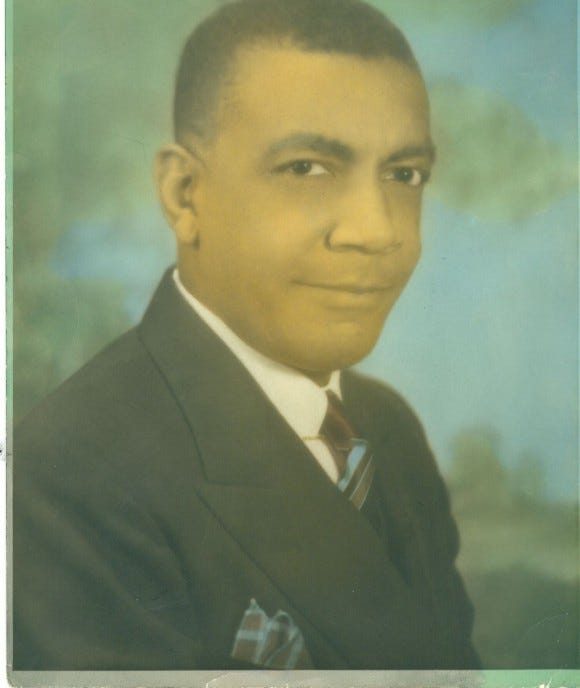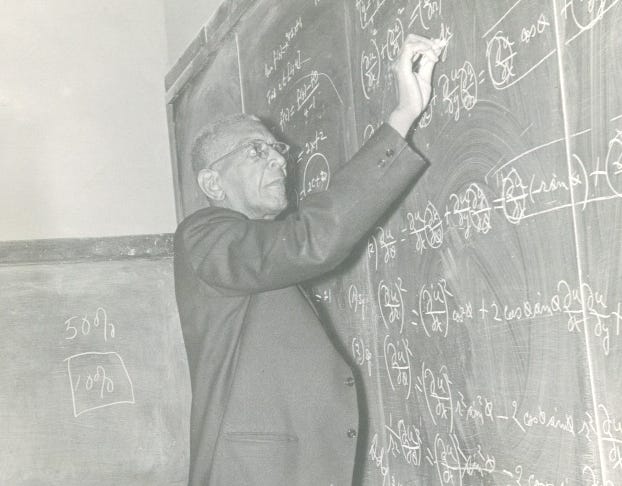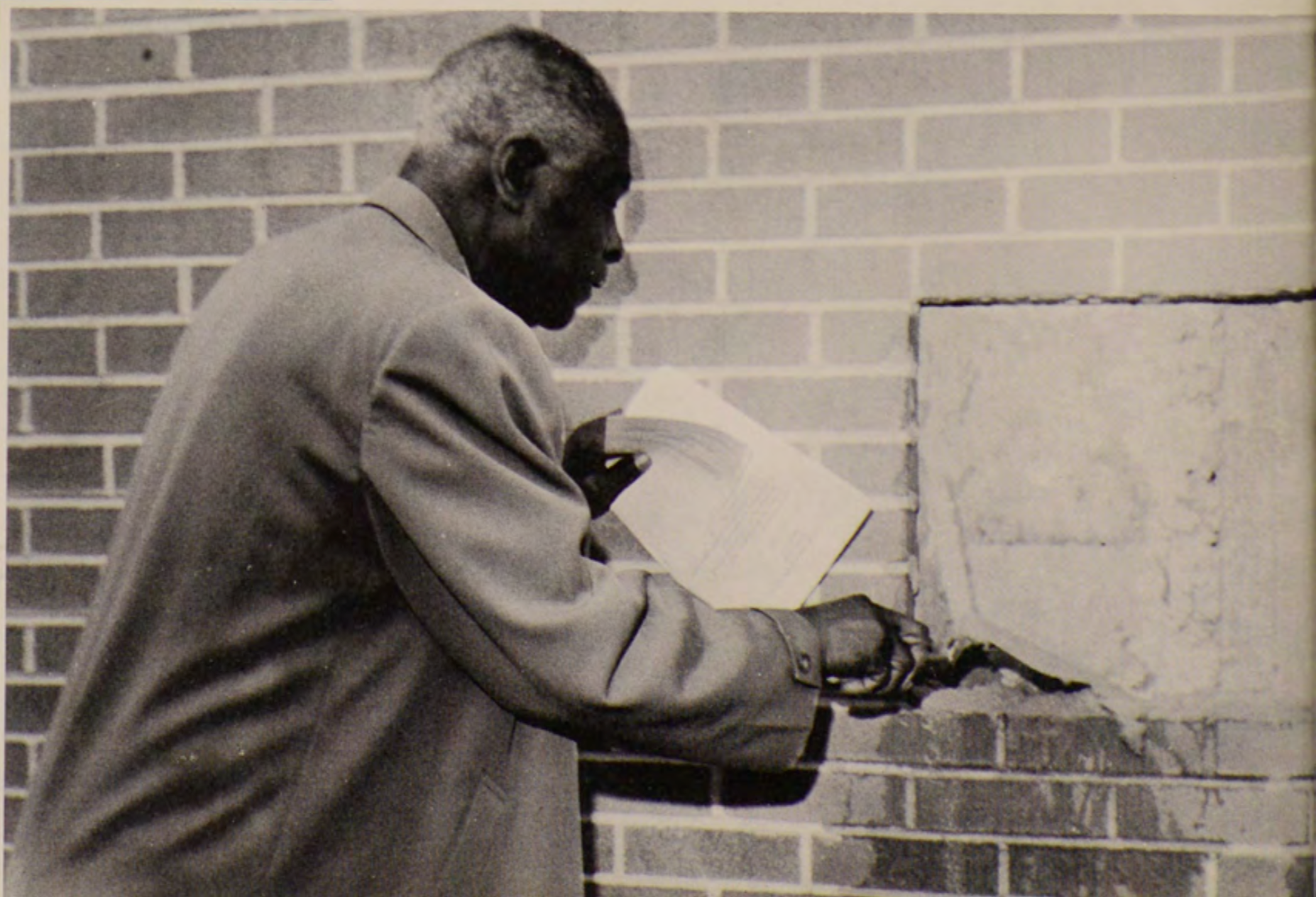Claude Bernhard Dansby
When Claude Bernhardt Dansby was born on September 19, 1897, in LaGrange, Georgia, his father, Burrell Wilkinson, was 29 and his mother, Virginia, " Jennie" Ray was 28. His father died when he was young and his mother remarried to Joe Dansby. He married LILLIAN HEARD on September 6, 1924, in New York City, New York. They had two children during their marriage. He died on June 20, 1973, in Atlanta, Georgia, at the age of 75, and was buried there.
The following tribute given by Hugh Gloster (‘31)President of Morehouse College from 1967–1987, was read at Claude Dansby’s funeral on June 22, 1973, at Friendship Baptist Church in Atlanta.
In the fall of 1914, a thin seventeen-year-old lad, Claude B. Dansby, walked across two Georgia counties in order to board a train for Atlanta, where he entered the Academy of Morehouse College. A brilliant mathematics student, he completed the academy course in 1918 and graduated as salutatorian of his college class in 1922. Except for one year, when he went to the University of Chicago to earn his Master’s degree, he was at Morehouse for 52 years — for eight years as a student and for 44 years as a teacher, including forty years as a department chairman — before going on to Bishop College in 1967 for six more years of service. (Dr. M.K. Curry, a former student of Mr. Dansby and now the distinguished President of the Bishop College, is with us today.)

From 1922 to 1967 Mr. Dansby not only worked all his life at Morehouse: he also gave all his life to Morehouse. So many teachers seek to work the minimum number of class hours to schedule the minimum number of conference hours, but such was not the case with Mr. Dansby. He willingly carried teaching overloads in order to help the College or the students. He gladly warranted additional conference hours not only to assist students with poor backgrounds but also to develop students with high potential.
Mr. Dansby was so dedicated to the College that he regularly assumed responsibility for burdensome tasks that most other teachers avoided. I can see him now, recording student attendance from the front row in the balcony of Sale Hall Chapel. I can see him now, supervising details in preparation for commencement exercises and alumni meetings. I can see him now, going out of the way to close windows, turn out lights, and remove trash. Such as “Pop” Dansby, and surely there will never be another.
Mr. Dansby was sympathetic and generous and cared very little about money for himself. Therefore, whenever he saw a student in financial need, he usually contributed cash or made loans. His friends say that over the years he gave thousands of dollars to students who desperately needed money to meet emergency expenses.
Mr. Dansby’s willingness to help students revealed itself even more strongly in the academic area. He used to say that he could make complicated mathematics so simple that even a fool could understand, and the record proved that he was right. He took weak students and made them average, he took average students and made them superior, and he took superior students and made them exceptional. Morehouse is famous as a training ground for mathematicians; and Claude B. Dansby, the master teacher, deserves most of the credit for the eminence of Morehouse men in this difficult field.
In connection with Mr. Dansby’s knowledge and skill as a teacher there is an interesting story. It is said that Dr. John Hope, wishing to strengthen the mathematics faculty at Morehouse, asked a University of Chicago official to recommend an outstanding black prospect for appointment. The University of Chicago representative reportedly replied, “You already have the best teacher, Claude B. Dansby.”

As I dig deeper and deeper into the history and psyche of Morehouse, I am more and more amazed at the quality and dedication of the faculty members who were assembled by John Hope mostly from the college itself, who worked for limited pay and at great sacrifice, and who developed men who have rendered signal service to this nation both as professionals and leaders. What other small college can boast a galaxy of faculty members to match these scholar-teachers who spent all or most of their careers at Morehouse — Hope, Archer, Brawley, Hubert, Harreld, Chivers, Tillman, Chandler, Harvey, Forbes, Dansby, Nabrit, Curry, Brazeal, Jones, and Williams?
In this company of academic superstars Claude B. Dansby was one of the brightest. He was a giver and not a receiver, but in giving he received much more than those who are primarily motivated by acquisitiveness and greed. In lighting the candle of knowledge for the hundreds of students who enrolled in his classes, he did not diminish the brilliance of his own candle. He did not seek money and honor, but a comfortable living and high tribute came without his asking. He is the only Morehouse teacher after whom a college building was named during his period of active service, and this building and his students will be a fitting memorial to his good works.
And so we gather here today to say ave atque vale, hail and farewell, to Claude B. Dansby, one of the ablest students and teachers in the history of the College. As a student, he learned easily; and , as a teacher, he taught easily. A master of his craft, he opened the doors of mathematics to all his students and led a talented few to the loftiest heights of quantification. Morehouse was the center and focus of his life; and to his Alma Mater and her students he gave unstintingly of this time, his ability, and his worldly goods. As a result of his life and work at Morehouse, all of us have been enlightened and enriched.
Looking back over the career and contributions of Claude B. Dansby, we must agree with Cicero, who said, “What greater gift can we offer the republic than to teach and instruct our youth?”

Built circa 1966, “The Physics, Mathematics, and Foreign Language Building” was renamed “C.B. Dansby Hall” in 1968 to venerate Morehouse’s legendary mathematics professor Claude “Pop” Dansby. The building currently houses the College’s departments of Mathematics, Physics, and Psychology.










Comments
Post a Comment